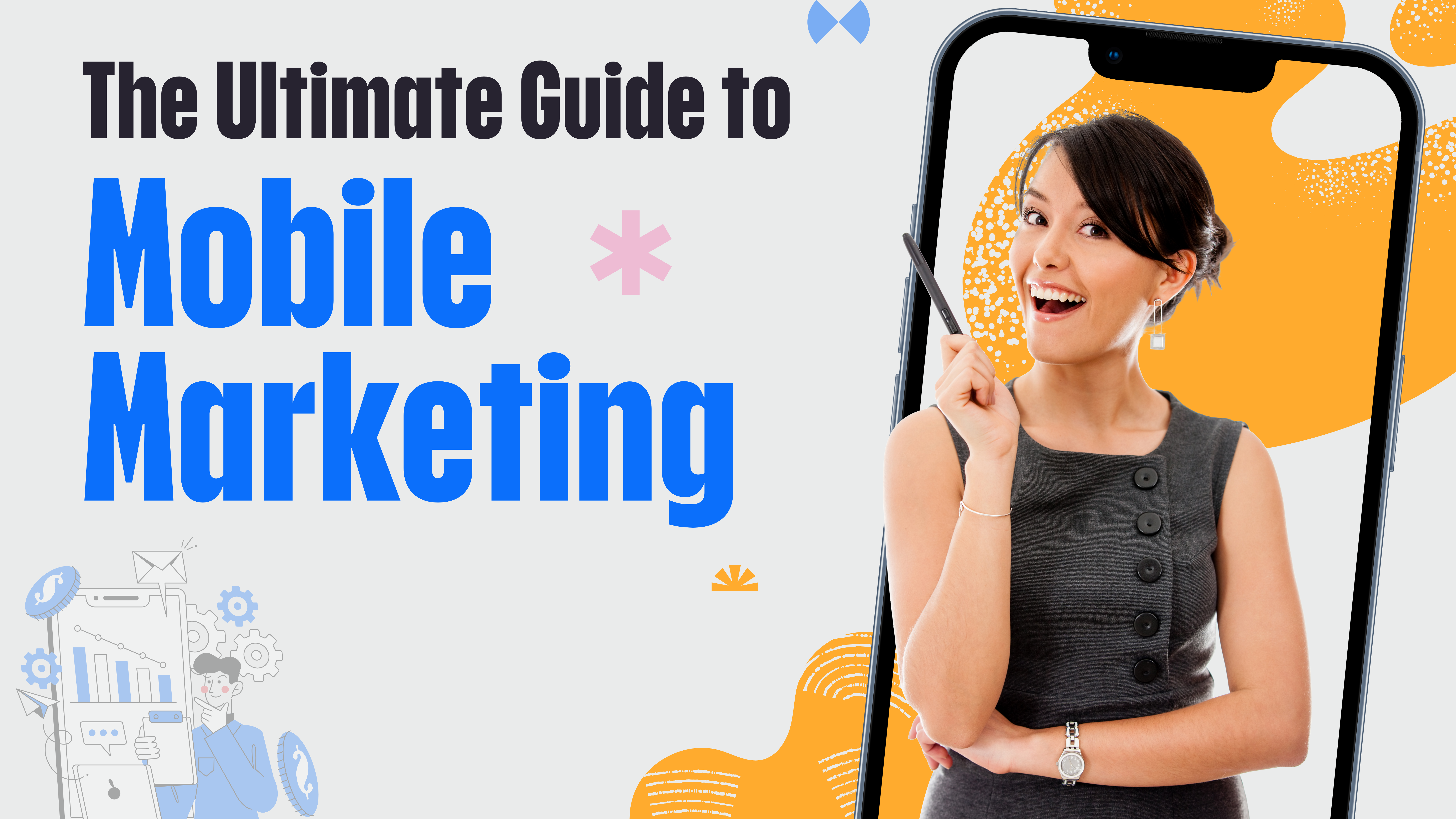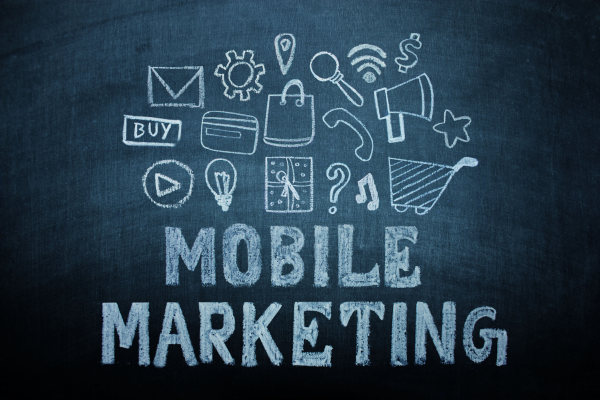
Table of Contents
ToggleMobile marketing has revolutionized how businesses interact with their audience by leveraging smartphones and other mobile devices. It involves reaching customers through SMS, mobile apps, push notifications, and more. Here's a comprehensive guide:
What is Mobile Marketing?
Mobile marketing focuses on delivering content and promotions to customers on their mobile devices. It includes various techniques like SMS, app-based marketing, and mobile-responsive websites to ensure brands connect effectively with their audience.
Why Mobile Marketing Matters
In an era where smartphones are extensions of our daily lives, mobile marketing has evolved from a trend to a necessity. Over 6.8 billion people globally use mobile devices, spending nearly 4 hours daily on apps and browsing. This ubiquity makes mobile the most direct channel to engage consumers, offering unparalleled opportunities for brands to connect, influence, and convert.
First, mobile marketing thrives on proximity. People carry phones everywhere, enabling real-time interactions—whether through location-based ads, SMS campaigns, or push notifications. A coffee shop can ping a discount to someone walking nearby, while an e-commerce app can remind users of abandoned carts. This immediacy drives action.
Second, personalization is amplified on mobile. Data from app usage, browsing habits, and in-device analytics allow brands to tailor messages to individual preferences. A fitness app might recommend gear based on workout history, while a streaming service can suggest shows aligned with viewing patterns. Such relevance boosts engagement and loyalty.
Mobile also dominates commerce. Over 70% of online purchases now occur on mobile devices, with seamless payment options (e.g., digital wallets, one-click checkout) reducing friction. Optimizing for mobile-first shopping experiences isn’t optional—it’s critical to capturing sales.
Finally, social media’s mobile-centric ecosystem (Instagram, TikTok, etc.) demands mobile-optimized content. Short videos, interactive polls, and shoppable posts thrive here, blending entertainment with conversion.
Ignoring mobile marketing risks irrelevance. As 5G, AR, and AI enhance mobile capabilities, businesses that prioritize mobile strategies will lead in building meaningful, measurable customer relationships. The future of engagement is in the palm of your hand—literally.
Key Mobile Marketing Strategies for Modern Brands
With mobile devices driving over 60% of global internet traffic, businesses must adopt targeted strategies to capture attention in a crowded digital landscape. Here are essential mobile marketing tactics to stay competitive:
Responsive Mobile-First Design
Ensure websites and emails adapt seamlessly to smaller screens. Slow load times or clunky layouts frustrate users—Google prioritizes mobile-friendly sites, impacting SEO rankings.
SMS & Push Notifications
Leverage direct, permission-based messaging for time-sensitive offers or reminders. Personalized texts see 98% open rates, while push notifications can re-engage app users with tailored alerts.
Location-Based Targeting
Use geofencing to deliver hyper-local ads. A retailer can send promotions when users are near a store, or a restaurant can highlight lunch specials during peak hours.
In-App Advertising & Loyalty Programs
Partner with popular apps for native ads or incentivize app downloads with rewards. Starbucks’ app, for example, drives 50% of sales via its mobile-exclusive loyalty perks.
Social Media Stories & Shoppable Posts
Platforms like Instagram and TikTok dominate mobile screen time. Create bite-sized video content, polls, or shoppable tags to turn engagement into instant purchases.
Voice Search Optimization
With 55% of teens using voice search daily, optimize content for conversational queries (“Where’s the nearest vegan cafe?”) to rank higher in voice-activated results.
AI-Powered Personalization
Analyze user behavior to deliver dynamic ads. Netflix’s recommendation engine and Amazon’s product suggestions exemplify how tailored content boosts retention.
Mobile Payment Integration
Streamline checkout with digital wallets (Apple Pay, Google Pay) and one-click payments to reduce cart abandonment, which averages 85% on mobile.
Mobile marketing isn’t static—test strategies using analytics, adapt to emerging trends (like AR ads), and prioritize user experience. Brands that blend creativity with data-driven tactics will thrive in the palm of consumers’ hands.
Best Practices for Mobile Marketing
In today’s hyper-connected world, mobile devices are the primary gateway to consumer attention. With 6.8 billion smartphone users globally and mobile traffic accounting for over 60% of web visits, businesses must refine their strategies to align with mobile-first behaviors. Below is a detailed, actionable roadmap to optimize mobile marketing efforts while ensuring originality and compliance with modern user expectations.
1. Optimize for Mobile Experience
A seamless mobile interface is non-negotiable. Frustration from slow load times or unresponsive layouts can drive users away instantly.
Adaptive Design: Build websites and emails that fluidly adjust to any screen size. Use modern frameworks like CSS Grid or Flexbox to ensure cross-device compatibility.
Speed Enhancements: Compress multimedia files, enable lazy loading, and leverage Content Delivery Networks (CDNs). Tools like WebPageTest or Lighthouse provide actionable insights for performance tuning.
Intuitive Navigation: Design menus and CTAs for effortless thumb navigation. Prioritize minimalist layouts to avoid clutter.
Progressive Web Apps (PWAs): Offer app-like functionality without downloads. For instance, Twitter Lite reduced data usage by 70% while increasing engagement through its PWA.
2. Deliver Contextual Personalization
Leverage mobile’s data-rich environment to create hyper-relevant experiences.
Behavior-Driven Campaigns: Trigger messages based on user actions. A shopping app could alert users about restocked items they previously viewed.
Geotargeting: Use beacon technology or GPS data to send localized offers. A sports retailer might promote hiking gear to users near national parks.
Dynamic Content Adaptation: Customize landing pages or app interfaces in real time. Netflix’s personalized thumbnails based on viewing history exemplify this approach.
3. Streamline the Path to Purchase
Mobile users prioritize speed and convenience. Eliminate barriers to conversion.
Frictionless Payments: Integrate one-tap solutions like Apple Pay or Google Wallet.
Guest Checkout Flexibility: Allow purchases without mandatory account creation. Offer biometric authentication (e.g., Face ID) for returning users.
Smart Form Optimization: Pre-fill fields using stored data and implement auto-correct features to minimize input errors.
4. Refine Direct Communication Channels
Push notifications and SMS are powerful but require precision to avoid alienation.
Strategic Timing: Align messages with user habits—e.g., send fitness app reminders in the morning or retail offers during lunch breaks.
Audience Segmentation: Categorize users by behavior, location, or purchase history. A travel brand might target frequent flyers with premium deals.
Value-Centric Messaging: Focus on urgency or exclusivity: “Last chance! Your selected items are selling fast—complete checkout now.”
5. Adapt to Voice Search Trends
Voice queries now dominate 40% of mobile searches, necessitating SEO adjustments.
Conversational Keywords: Optimize for phrases like “Where can I find vegan pizza nearby?” instead of generic terms.
Localized Content: Ensure business listings on Google, Yelp, and Apple Maps are consistent and updated.
Featured Snippets: Structure content to answer questions concisely, increasing chances of appearing in voice search results.
6. Embrace Immersive Content Formats
Visual and interactive content drives engagement on mobile.
Short-Form Video: Platforms like Instagram Reels and YouTube Shorts thrive on snackable, engaging clips. Showcase product tutorials or user testimonials.
Augmented Reality (AR): Enhance shopping experiences—e.g., Warby Parker’s app lets users virtually try on glasses.
Interactive Tools: Deploy quizzes or calculators (e.g., a finance app offering mortgage estimates) to boost user interaction.
7. Harness AI for Scalable Personalization
Automation and machine learning unlock efficiency and precision.
Intelligent Chatbots: Deploy AI assistants for instant support. Domino’s chatbot simplifies pizza ordering via natural language processing.
Predictive Analytics: Anticipate user needs—Spotify’s “Daily Mix” playlists are curated using listening patterns.
Programmatic Ads: Use real-time bidding to serve personalized ads based on browsing behavior.
8. Build Trust Through Transparency
Data privacy concerns require brands to prioritize ethical practices.
Explicit Consent: Clearly explain data usage during opt-in and provide easy unsubscribe options.
Security Assurance: Highlight encryption protocols (SSL/TLS) and trusted payment partners.
Minimal Data Collection: Only request essential information to reduce user hesitation.
9. Continuously Test and Evolve
Agility is critical in mobile marketing’s fast-paced environment.
A/B Testing: Experiment with variables like button colors, headlines, or video lengths.
Analytics Integration: Monitor metrics such as bounce rates, session depth, and conversion funnels via tools like Adobe Analytics or Amplitude.
User-Centric Feedback: Conduct in-app surveys or analyze reviews to identify friction points.
10. Innovate with Emerging Technologies
Stay ahead by adopting cutting-edge tools.
5G Optimization: Leverage faster speeds for high-quality video streaming or real-time AR experiences.
QR Code Campaigns: Bridge offline and online engagement—Coca-Cola’s “Scan to Win” campaigns drove user interaction via QR codes.
Wearable Integration: Sync with smartwatches for health brands (e.g., Fitbit challenges) or real-time retail updates.
Mobile marketing’s future hinges on balancing innovation with empathy. Brands must anticipate user needs, deliver value at every touchpoint, and adapt to technological shifts—from AI advancements to the rise of the metaverse. By prioritizing speed, relevance, and trust, businesses can transform mobile interactions into enduring customer relationships. The key lies not just in reaching users where they are but in creating experiences that resonate deeply and inspire loyalty.
Advantages of Mobile Marketing
Wider Reach
Tap into a massive audience as mobile usage continues to grow.
Real-Time Connection
Engage users with timely notifications and promotions.
Cost-Effective
Compared to traditional advertising, mobile campaigns often provide a higher return on investment (ROI).
Improved Engagement
Interactive features like app-based content or quizzes keep users involved.
Challenges in Mobile Marketing
Privacy Concerns
Always obtain user consent for data collection and comply with regulations like GDPR.
Ad Fatigue
Avoid bombarding users with frequent ads to prevent annoyance.
Device Compatibility
Ensure your content works across various devices and operating systems.
Future of Mobile Marketing
The rise of 5G, augmented reality (AR), and artificial intelligence (AI) will further shape mobile marketing. Expect more immersive and personalized campaigns as technology advances.
Mobile marketing is essential in today’s Digital Marketing era. By adopting responsive designs, personalized messages, and innovative tools, businesses can connect with their audience effectively. Prioritize user experience, monitor results, and stay updated on trends to maximize success in your mobile marketing efforts.

